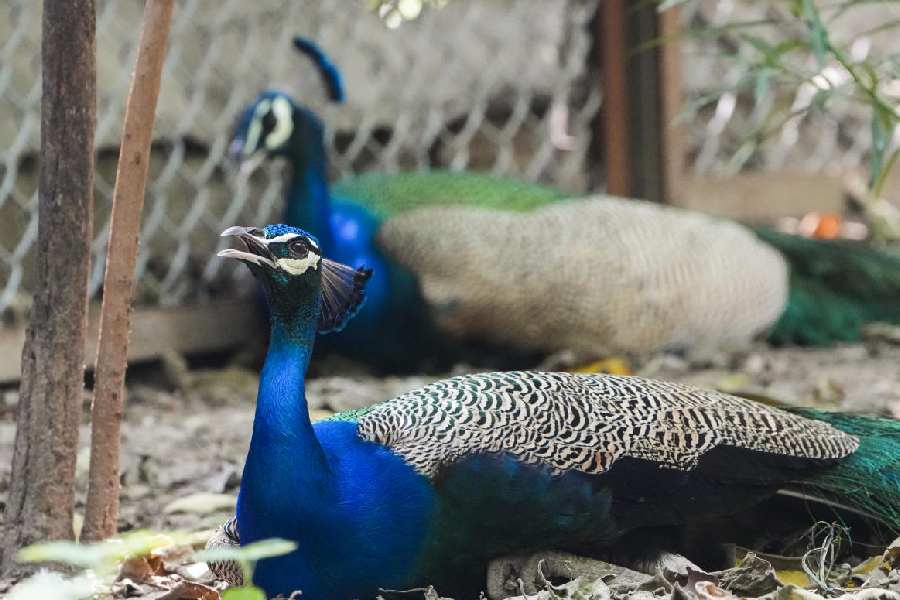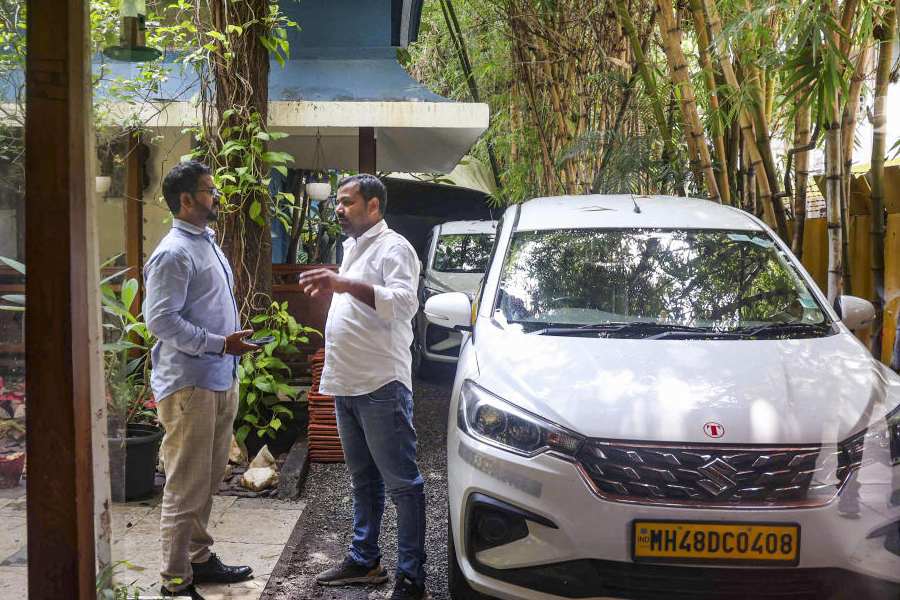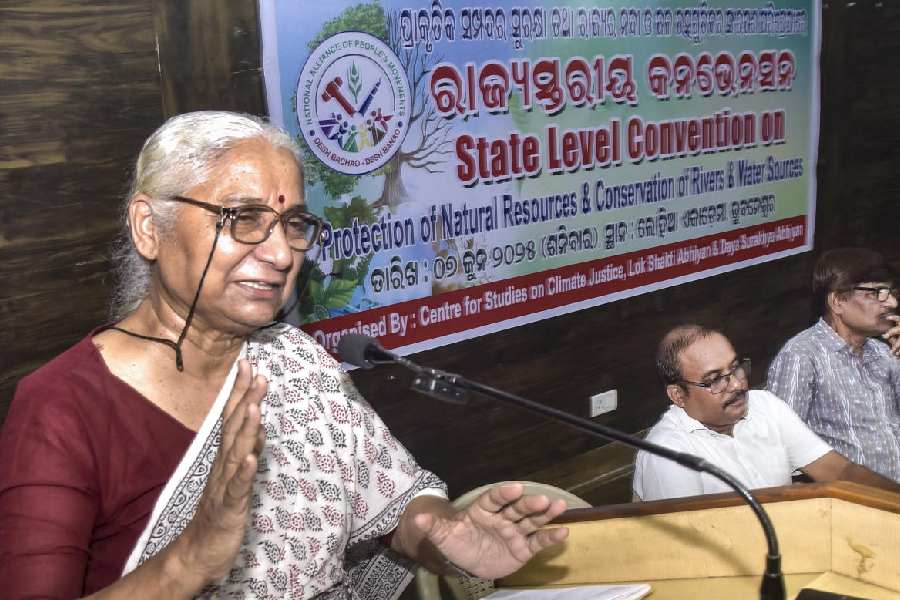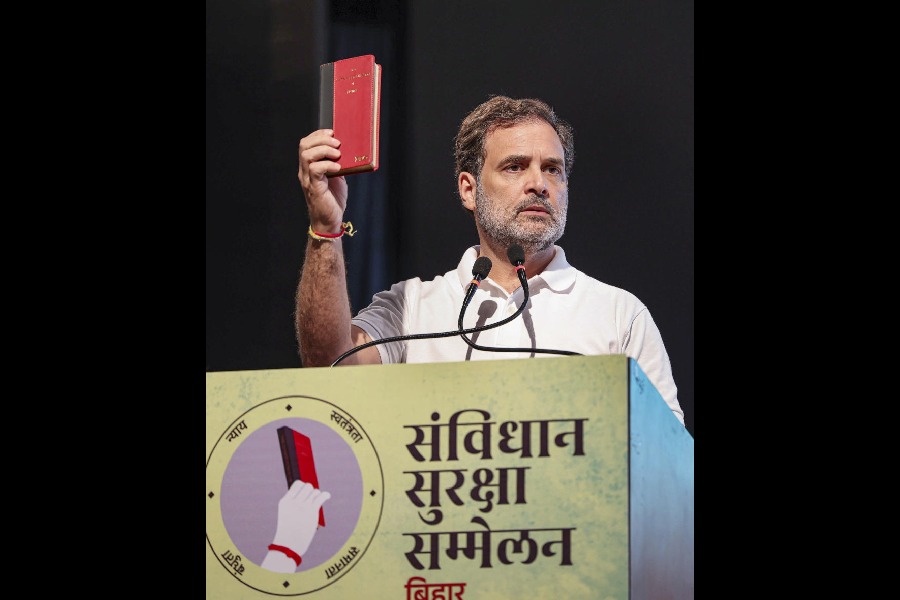
New Delhi, May 6: The CRPF's central zone headquarters, which oversees six states, has been shifted from Calcutta to Raipur in the aftermath of the April 24 massacre of 25 personnel by Maoists in Sukma, Chhattisgarh.
Union home ministry sources said the Centre would also withdraw the 25 CRPF companies (about 2,200 to 2,500 troops) on Maoist duty in Bengal, and de-notify West Midnapore, Bankura, Purulia and Birbhum as "Left-wing extremism-affected" districts.
"The tactical decision by the Prime Minister's Office is meant to improve the operational performance of the country's largest paramilitary force and principal anti-Maoist arm. Chhattisgarh is the worst hit among the Maoist-affected states," a senior North Block official said.
Ironically, the central zone headquarters had been shifted from Raipur to Calcutta on July 23, 2010, just three months after the bloodiest Maoist attack on the paramilitary force killed 76 jawans in Dantewada, Chhattisgarh.
The official reason was the increased Maoist activity in Bengal during the last years of Left rule (though it never approached the scale witnessed in Chhattisgarh) but sources had privately acknowledged that the paramilitary brass preferred to live in metros.
"Some IPS officers had pressed for postings in a safer place like Bengal as they feared a threat to their lives in Chhattisgarh. This was a key reason for the shift to Calcutta," a home ministry official said. "But the Prime Minister's Office was very unhappy that senior officers were living in Calcutta during this crisis and ordered them back in Raipur to lead the force by example."
Another official, however, said: "The headquarters was shifted to Calcutta because the Maoists were expanding their base in Bengal and other parts of eastern India. But the situation has changed: there have been no Maoist strikes in Bengal in the past five years, so even the troops are being moved out."
Sources in Nabanna, the Bengal secretariat, said that the transfer of the headquarters would not hurt Bengal much and it indicated that states like Chhattisgarh had graver law and order problems. "It is a kind of certificate for Bengal by the Narendra Modi government in Delhi - that the state has solved the problem while it is still a threat in BJP-ruled Chhattisgarh. Chief minister Mamata Banerjee should not be displeased," a state government official said.
The official, however, added that Bengal would raise its voice if the Centre tried to withdraw the central paramilitary forces deployed in Jungle Mahal, because the move might prompt the Maoists to try to regain their foothold.
According to a May 4 circular signed by the CRPF deputy inspector-general (organisation), S.K. Upadhyay, the special director-general who heads the central zone and his deputy, an additional director-general, have been "shifted to Raipur with necessary functional staff with immediate effect". Some other senior officers may follow them later.
The central zone headquarters oversees operations across Bengal, Bihar, Odisha, Jharkhand, Chhattisgarh and Maharashtra (where Maoist activities are largely restricted to the eastern districts).
After the April 24 carnage, which followed the killing of 12 jawans on March 11, the Centre had been castigated for its poor handling of the Maoist insurgency in BJP-ruled Chhattisgarh, and particularly for keeping the CRPF headless for two months.
Within two days, a chastened government had appointed Rajiv Rai Bhatnagar as full-time CRPF director-general. The zonal headquarters shift from Salt Lake's HC Block is part of the overhaul.
Sources said the Centre was chalking out an anti-Maoist strategy and a counter offensive in Chhattisgarh. A couple of days ago, Union home minister Rajnath Singh had met home secretary Rajiv Mehrishi, national security adviser Ajit Doval and Intelligence Bureau director Rajiv Jain.
The CRPF has four operational zones: central and south (where it fights Maoists); and Jammu and Kashmir and the Northeast (where it helps the army combat separatist insurgents). Its other duties include law and order, riot control, safety of key installations, disaster management and VIP security.
Of the paramilitary force's about 3 lakh troops, over 90 battalions (90,000 troops) are posted in Maoist zones.
A Union home ministry report says that Chhattisgarh and Jharkhand together accounted for 68.5 per cent of Maoist violence and 69 per cent of deaths in 2016. Bihar, Odisha and Maharashtra reported 12.3, 8.2 and 6.9 per cent of the violent incidents, respectively, while Andhra Pradesh, Madhya Pradesh and Telangana reported about four per cent.
The central zone has six anti-Maoist training schools. "Between 2011 and 2016, this zone was responsible for the arrest of over 5,400 Maoists and the surrender of 3,309," an officer said.










